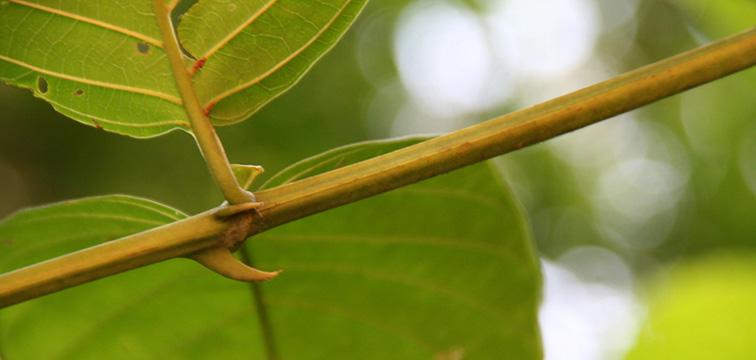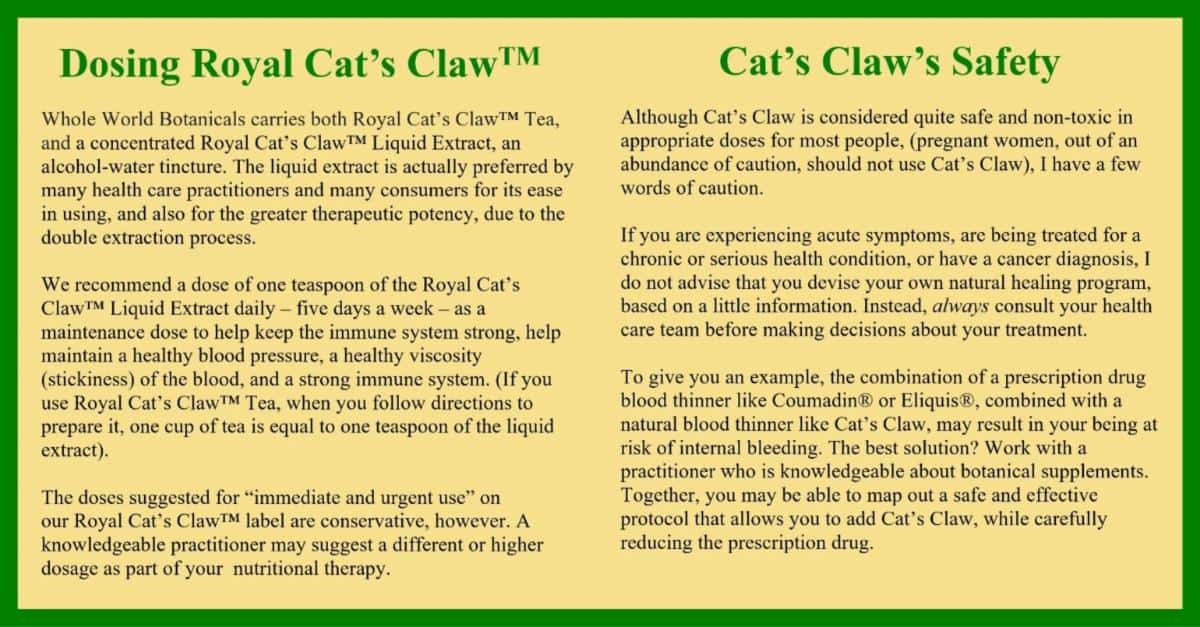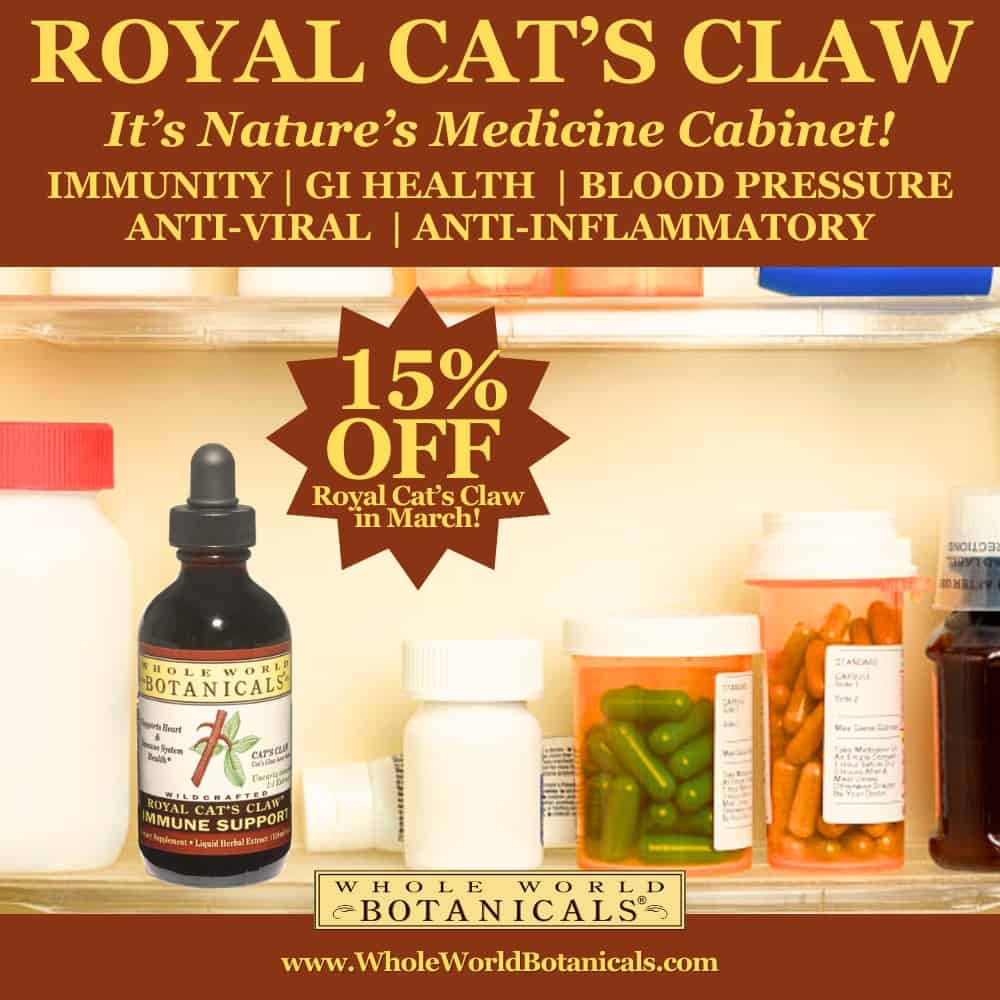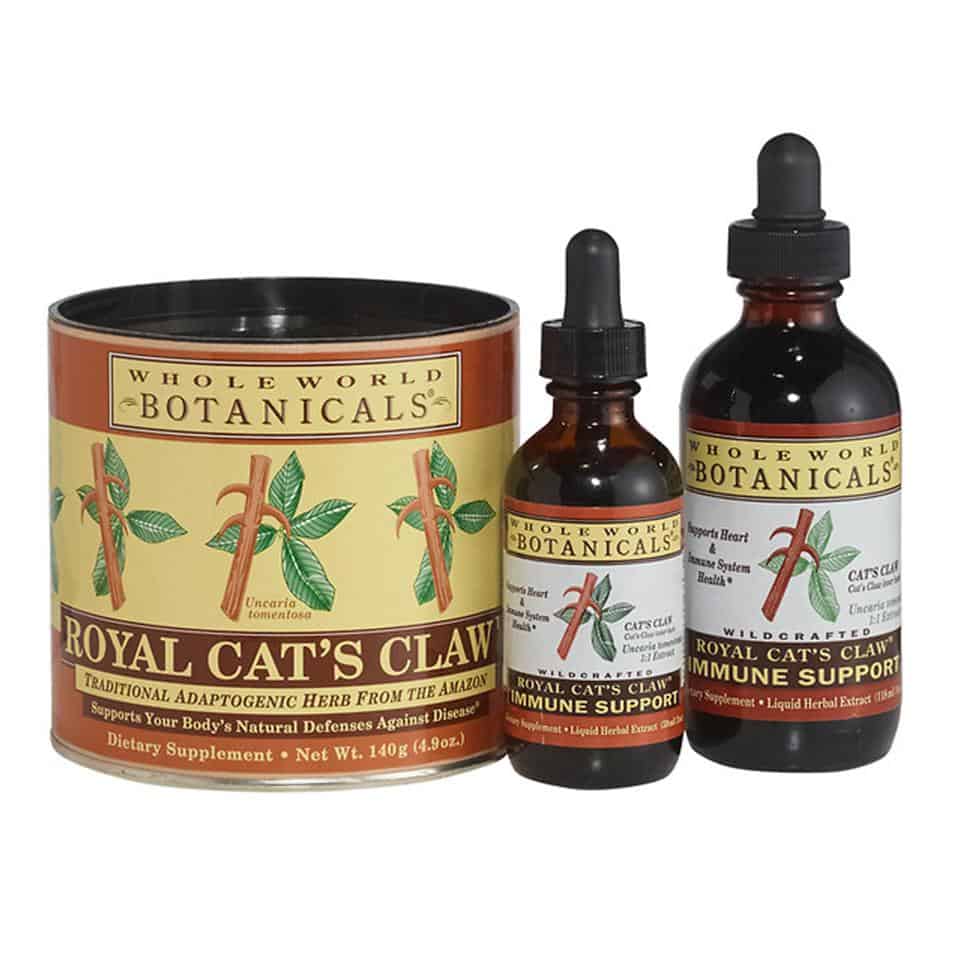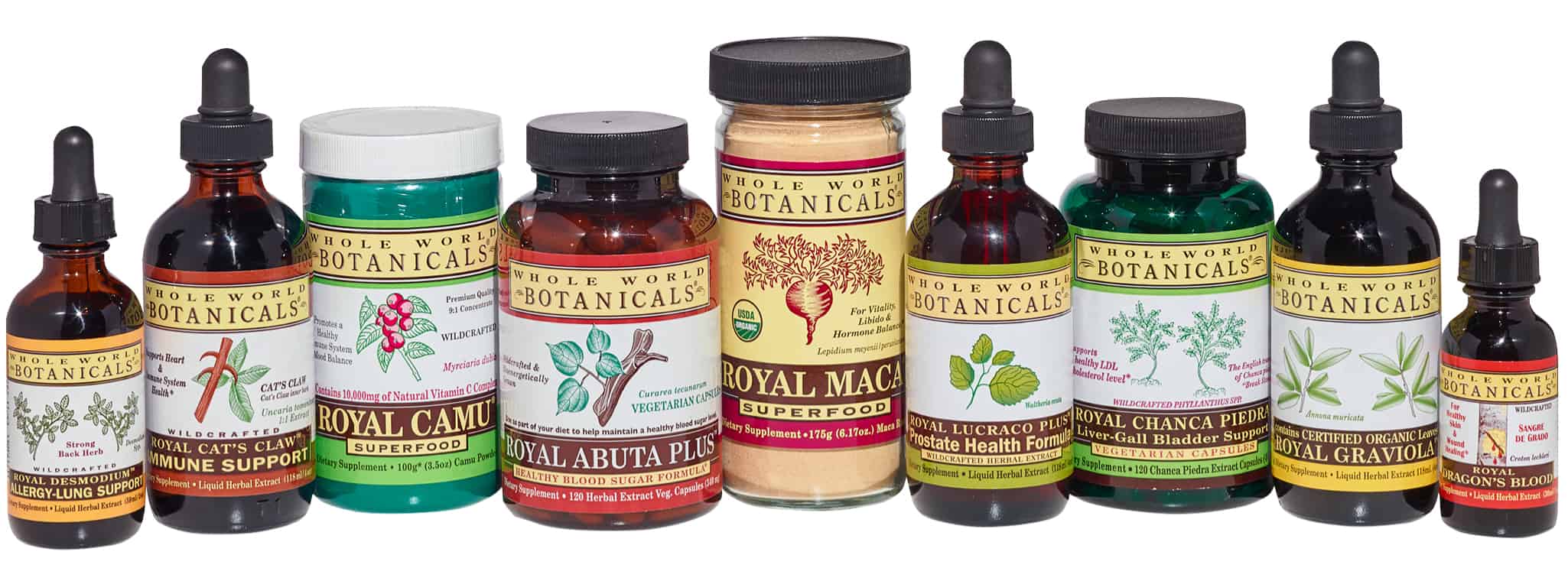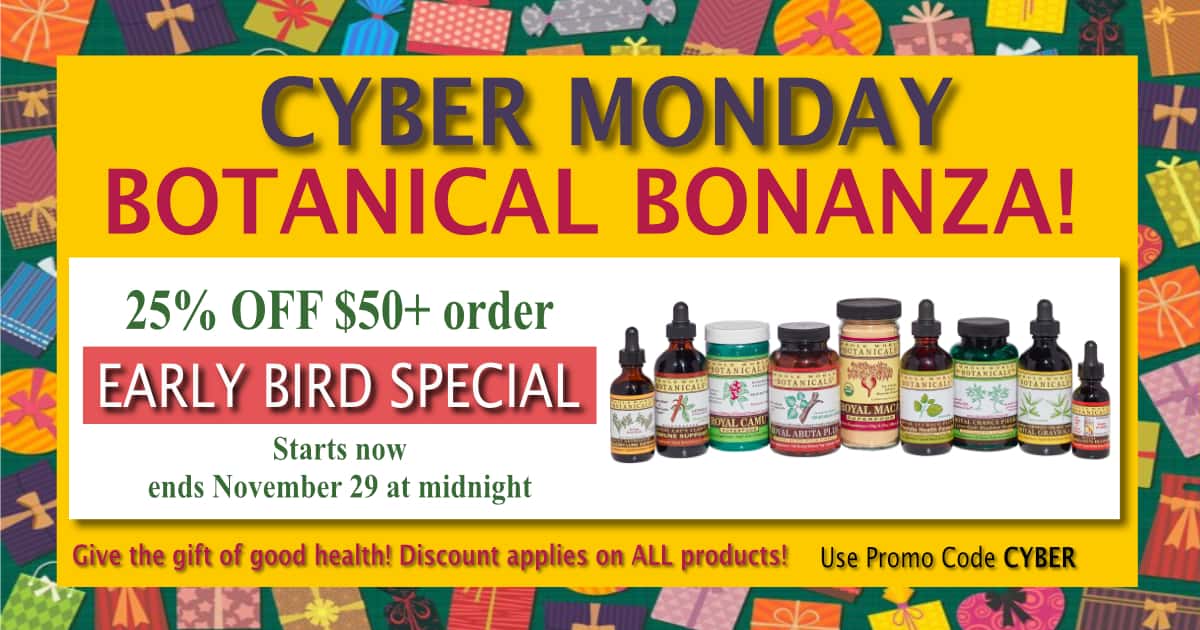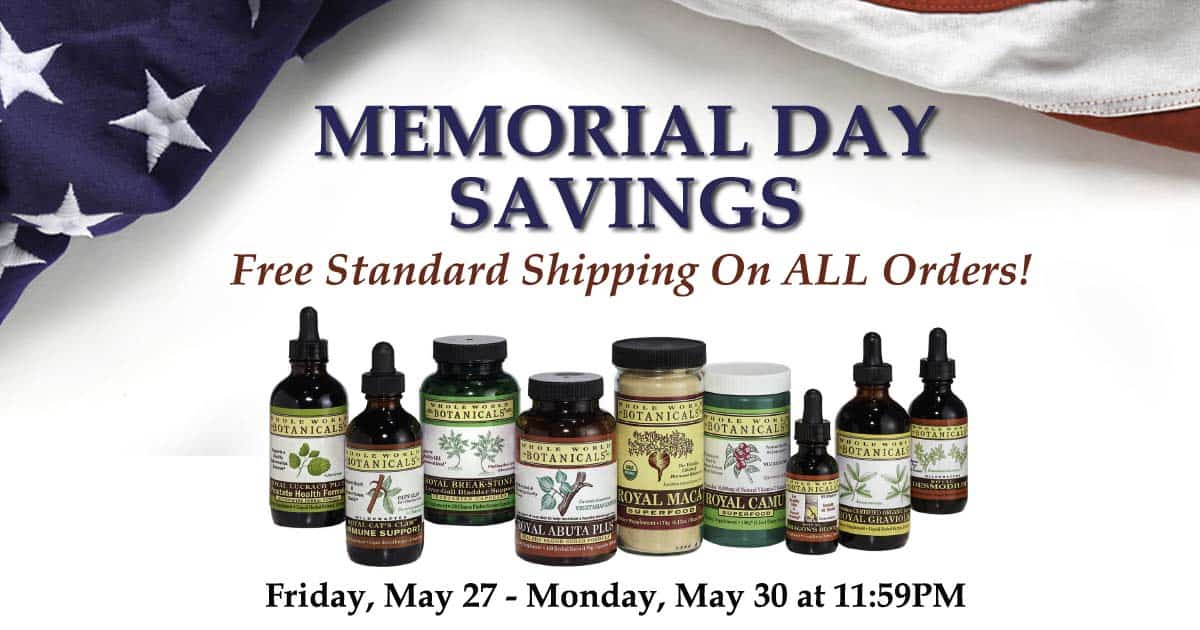CAT’S CLAW: NATURE’S MEDICINE CABINET
Part One: The Journey, and Gut Health
By Viana Muller, PhD
When I’m not feeling well, it’s often a sore throat, a headache, a feeling of discomfort in the gut, or a mix of low energy and mental malaise. Others might have aches or a touch of arthritic pain. But these vague and common symptoms are not likely to send me – or you – running to a doctor, because doctors often just stare blankly, order various tests, and, when the test results come back, end up saying “everything is fine.” That’s why my first response is often to turn to Cat’s Claw.
I first learned about Cat’s Claw from a wonderful missionary couple who had long been interested in indigenous medicinal plants after decades living in the Peruvian rainforest. Ron and Phyllis Manus told me that the most useful rainforest remedy they had found and used in their many years of working with the Urarina people was Cat’s Claw.
Cat’s Claw has been a popular medicinal tea with the Indigenous people of Peru for at least 2,000 years. Cat’s Claw – botanical name Uncaria tomentosa, and uña de gato in Spanish – gets its name from the claw-like thorns that give the vine its unique appearance. (There’s a related plant, Uncaria guianensis, also called Cat’s Claw; it contains only a fraction of the therapeutic properties found in Uncaria tomentosa.)
In this first part of my series on Cat’s Claw, I’ll introduce you to this remarkable therapeutic botanical and summarize some of the ways Cat’s Claw can support your gut and immune health. Part Two will explore other ways Cat’s Claw can promote immune health, as well as support mood, brain performance, and cardiovascular health, and reduce inflammation. *
The Journey to Cat’s Claw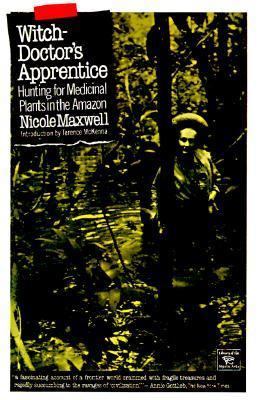
Ron and Phyllis Manus also introduced me to the incredible Nicole Maxwell. Nicole was a true pioneer in the effort to recapture traditional knowledge of the medicinal plants of the Amazon River Basin in Peru. Back in the 1950s and 1960s, as Nicole explored the principal tributary rivers, few non-indigenous people aside from botanists cared about these plants. I met Nicole in person only once, but we became friends through our many phone conversations.
In one of our conversations, Nicole told me that she also believed that Cat’s Claw was the single most valuable Peruvian rainforest remedy she had encountered. I knew it was a significant help to her personally, as she suffered from arthritis. She also wrote about Cat’s Claw in what has become one of my favorite books, Witch Doctor’s Apprentice: Hunting for Medicinal Plants in the Amazon. (Note: Maxwell’s reference to “witch doctors” refers to Indigenous healers in the Amazon, or what we today would call a shaman or curandero.)
In the book, Maxwell describes Cat’s Claw native habitat: “This is a woody vine which grows in the foothills [of the rainforest], chiefly at altitudes between seven or eight hundred and twenty-five hundred meters,” or around 2,500 – 8,000 feet.
In addition to greatly expanding my knowledge of and respect for Cat’s Claw, Nicole Maxwell also introduced me to Dr. Sidney McDaniel, a world class botanist taxonomist who – in the 1970s and 1980s – collected more than 10,000 different species of plants from the upper Amazon for the U.S. Department of Agriculture, which was testing plants for phytocompounds active against cancer. We were thrilled when Dr. McDaniel subsequently joined me and Elena Rojas Martinez to become a cofounder of Whole World Botanicals.
We recognized how singularly valuable Cat’s Claw is, a veritable natural medicine cabinet capable of supporting the gut and immune health among other benefits. And we were determined that Whole World Botanicals would make potent, high-quality Cat’s Claw available as a botanical remedy outside Peru.
Cat’s Claw and Gut Health
Traditionally, Cat’s Claw has a long history of use for conditions related to digestion and elimination, including nausea, diarrhea, constipation, ulcers, bloating, and food intolerances. Modern medicine now recognizes that Cat’s Claw’s antimicrobial and anti-inflammatory properties make it a transformer of the microbiome, the term used to describe the mix of bacteria, fungi, and viruses that live in our gut and intestines.
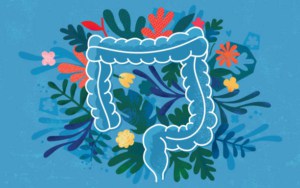 Dr. Brent Davis, a leading researcher in herbal and botanical medicine, has said that Cat’s Claw “has the ability to break through severe intestinal derangements that no other available products can touch.” Cat’s Claw is now an increasingly popular part of a healthy cleanse or detox and is often recommended as a complement to treatments for Crohn’s disease, irritable bowel syndrome, constipation, and ulcerative colitis, among other conditions.
Dr. Brent Davis, a leading researcher in herbal and botanical medicine, has said that Cat’s Claw “has the ability to break through severe intestinal derangements that no other available products can touch.” Cat’s Claw is now an increasingly popular part of a healthy cleanse or detox and is often recommended as a complement to treatments for Crohn’s disease, irritable bowel syndrome, constipation, and ulcerative colitis, among other conditions.
We’ve heard from many clients who reported extraordinary results using Cat’s Claw for gut health issues. Laura T. wrote us: “Royal Cat’s Claw™ Tea has made a big difference with my lower digestive issues. I have leaky gut, food allergies and fibromyalgia. This tea has been very helpful; reducing symptoms and lessening food allergies.”
Teresa B. found Cat’s Claw the solution to her constipation. “All my life I have struggled with constipation, sometimes taking an hour to get anything out. I used to take Cascara Sagrada to help, but because I’m sensitive and it can be irritating to the colon, I didn’t like taking it so much. When I take a maintenance dose of Royal Cat’s Claw™ a few days a week, I feel like a normal person every day! Everything comes out easily and quickly without strain or pain. What a relief for me. Thank you for this product!”
It can even be helpful for nausea and diarrhea, as I discovered when I developed food poisoning from eating contaminated seviche in Lima about five years ago. If I could only take one botanical with me when travelling, it would be Cat’s Claw. I consider it indispensable.


